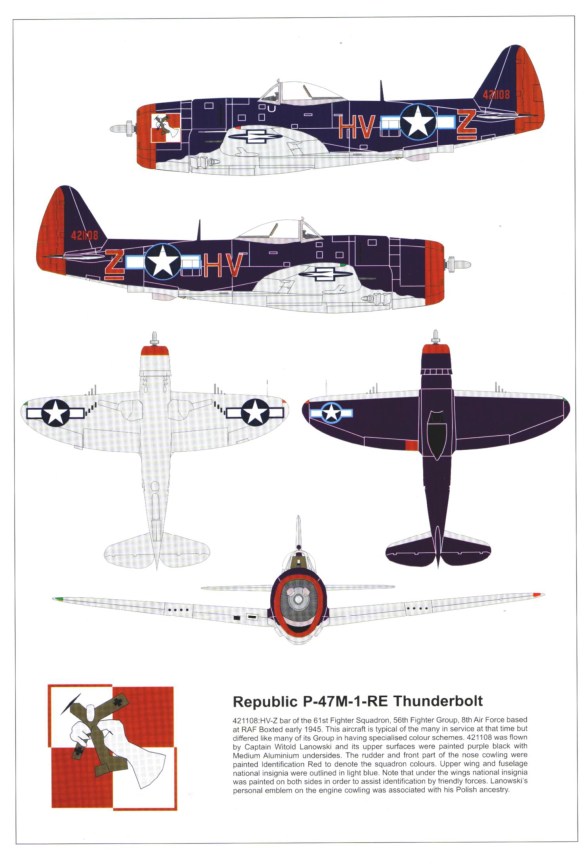A small run of P-47Ms followed the -47D on the production line, but it is desirable before discussing this to account for the designation gaps. The XP-47E with pressurised cockpit has been mentioned above, as has the P-47G which was the designation of the Curtiss-built P-47D; one P-47B was used to test the installation of laminar-flow wings as the XP-47F; and the XP-47H designation covered two P-47Ds in which new 2,300 hp (1715 kW) Chrysler XIV-2220-1 inline engines were installed to give higher performance, overall length being increased by 3 ft 0 1/4 in (0.92 m) in comparison with the P-47D. This version did not materialise in production form, however, as the Chrysler engine was not put into production. Far more radical was the XP-47J (no use was made of an I designation) which introduced a closely-cowled fan-cooled R-2800-61 engine rated at 2,100 hp (1 566 kW), and provided with a wing of lighter weight which incorporated six 12.7 mm (0.50 in) machine-guns. First flown on 26 November 1943, this experimental aircraft was the first piston-engined machine to exceed a speed of 500 mph (805 km/h) in level flight, attaining 504 mph (811 km/h) on 4 August 1944, but despite this sparkling performance production plans were abandoned in favour of an even more advanced project designated XP-72. The XP-47K has been mentioned above, and the XP-47L resulted from structural changes in a P-47D to provide greater internal fuel capacity.
The P-47M, of which only 130 were built, was preceded by three YP-47Ms. These introduced a similar combination of R-2800 engine and turbocharger as those which had proved so successful in the XP-47J, the engine being able to develop a combat rating of 2,800 hp (2088 kW) at 32,500 ft (9905 m). The aim was to produce a high-speed version of the P-47D airframe which could be put into operation quickly to counter the turbine and rocket-powered fighters in service with the Luftwaffe in Europe, as well as the V-1 flying bombs, which were very vulnerable to a high-speed fighter. Most of these aircraft served after D-Day with USAAF units in Europe, operating initially from Normandy.
Last of this famous line of fighters was the P-47N, of which 1,816 were produced, making the grand total of 15,677 Thunderbolts when production ended soon after VJ-Day. The P-47N utilised the powerplant which had proved so successful in the P-47M, the basic P-47D airframe with an enlarged dorsal fin, strengthened landing gear, and a new strengthened wing of increased span which, for the first time in any version of the P-47, included wing fuel tanks. The resulting maximum internal plus external fuel capacity of 1,146 US gallons (4338 litres) was sufficient to ensure that the P-47Ns deployed in the Pacific were able to provide an adequate escort service for XXI Bomber Command (VH) Boeing B-29 Superfortresses during long over-water missions.
This enormous fighter, a true juggernaut, indeed the ‘Jug’ to its friends, proved itself to be robust and reliable, able to absorb an enormous amount of punishment before being beaten by an enemy, and resulting in the exceptionally low loss rate for this type of 0.7 per cent. The P-47D and P-47N remained in USAF service for a number of years after the war, passing to Air National Guard units before being phased out of service in 1955, by which time they had been redesignated F-47D and F-47N respectively.
